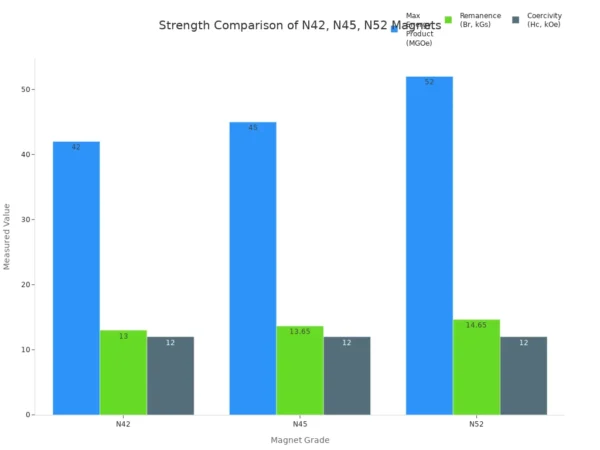Generally speaking, neodymium magnets have 2 types of popular production techniques – sintered neodymium magnets and bonded neodymium magnets. The difference between them is mainly in the forming processes.
Bonded neodymium magnets are made by adding neodymium powder to the binder. The bonding process is essentially the same as injection molding.
Meanwhile, sintering is vacuuming and high-temperature heating. Sintered neodymium magnets use powder metallurgy technology. The molten alloy is made into a powder and pressed in a magnetic field to form a briquette.
The briquettes are sintered in an inert gas or vacuum to achieve densification. To improve the coercivity of the magnets, an aging heat treatment is usually required.
Basics of the sintering technique
Sintered neodymium magnets are made by the powder metallurgy technique.
Firstly, turn the melted alloy into powder and press the powder into a briquette in a magnetic field.
Then, sinter the briquette in an inert gas or vacuum to achieve densification.
Generally, only magnet blanks are produced after sintering, and then obtain various shapes of magnets after mechanical processing (wire cutting, slicing, grinding, etc.).
Sintered neodymium magnets are widely used in electronics, motors, medical devices, toys, packaging, hardware machinery, aerospace, and other fields.
Common products containing neodymium magnets include permanent magnet motors, speakers, magnetic separators, computer disk drives, magnetic resonance imaging equipment instruments, etc.
Compared with the bonding technique, the sintering technique has some disadvantages of high processing cost, high loss during processing, and poor dimensional accuracy.
Meanwhile, its advantages are also obvious: the (BH) max of sintered neodymium magnets can reach more than 50M, while the bonded magnets are generally below 10M.
Basics of the bonding Magnet
Bonded neodymium magnets are a kind of synthetic magnets made of Nd2Fe14B. Bonded neodymium magnets are made of fast-hardened neodymium powder and binder through “molding” or “injection molding”.
Bonded neodymium magnets are widely used in the fields of office automation equipment, electrical machinery, audio-visual equipment, instruments, small motors, and measuring instruments.
Products that contain bonded neodymium magnets can include machinery, cell phones, CD-ROM, DVD-ROM drive motors, hard disk spindle motors HDD, other miniature special DC motors, and automation instruments.
They have an annual growth rate of 35%.
The bonding technique has the advantages of low cost, high dimensional accuracy, large freedom of shape, good mechanical strength, light, etc.
Compared with the sintering neodymium magnets, bonded neodymium magnets can be made into various complex shapes at one time without secondary processing, which is not possible with the sintering technique.
With the help of bonded neodymium magnets, we can greatly reduce the size and weight of electrical motors.
Differences between the sintering and bonding
1). The density of bonded neodymium magnets is about 6 g/cm3; meanwhile, the density of sintered neodymium magnets is about 7.5 g/cm3.
2). Bonded neodymium magnets contain less neodymium, so the magnetism is not as high as sintered neodymium magnets.
3). Ring neodymium magnets with a thin wall are generally only possible with the bonding technique.
4). Usually, they have 2 different types of surface treatment – Zinc and nickel coatings for sintered neodymium magnets; black epoxy resin for bonded neodymium magnets.
5). Bonded neodymium magnets are relatively cheaper, when you compare their prices.
6). For the production of bonded neodymium magnets, molds are required, but for sintered neodymium magnets, no molds are required.
Above are the basic differences between the sintering and bonding techniques for neodymium magnets. They can be a helpful guide when you choose custom neodymium magnets.
Osenc is a custom neodymium magnet supplier, and we are more than happy to help if there is still any question about buying the right magnets. Just send us an email.

I’m Ben, with over 10 years in the permanent magnet industry. Since 2019, I’ve been with Osenc, specializing in custom NdFeB magnet shapes, magnetic accessories, and assemblies. Leveraging deep magnetic expertise and trusted factory resources, we offer one-stop solutions—from material selection and design to testing and production—streamlining communication, accelerating development, and ensuring quality while reducing costs through flexible resource integration.



